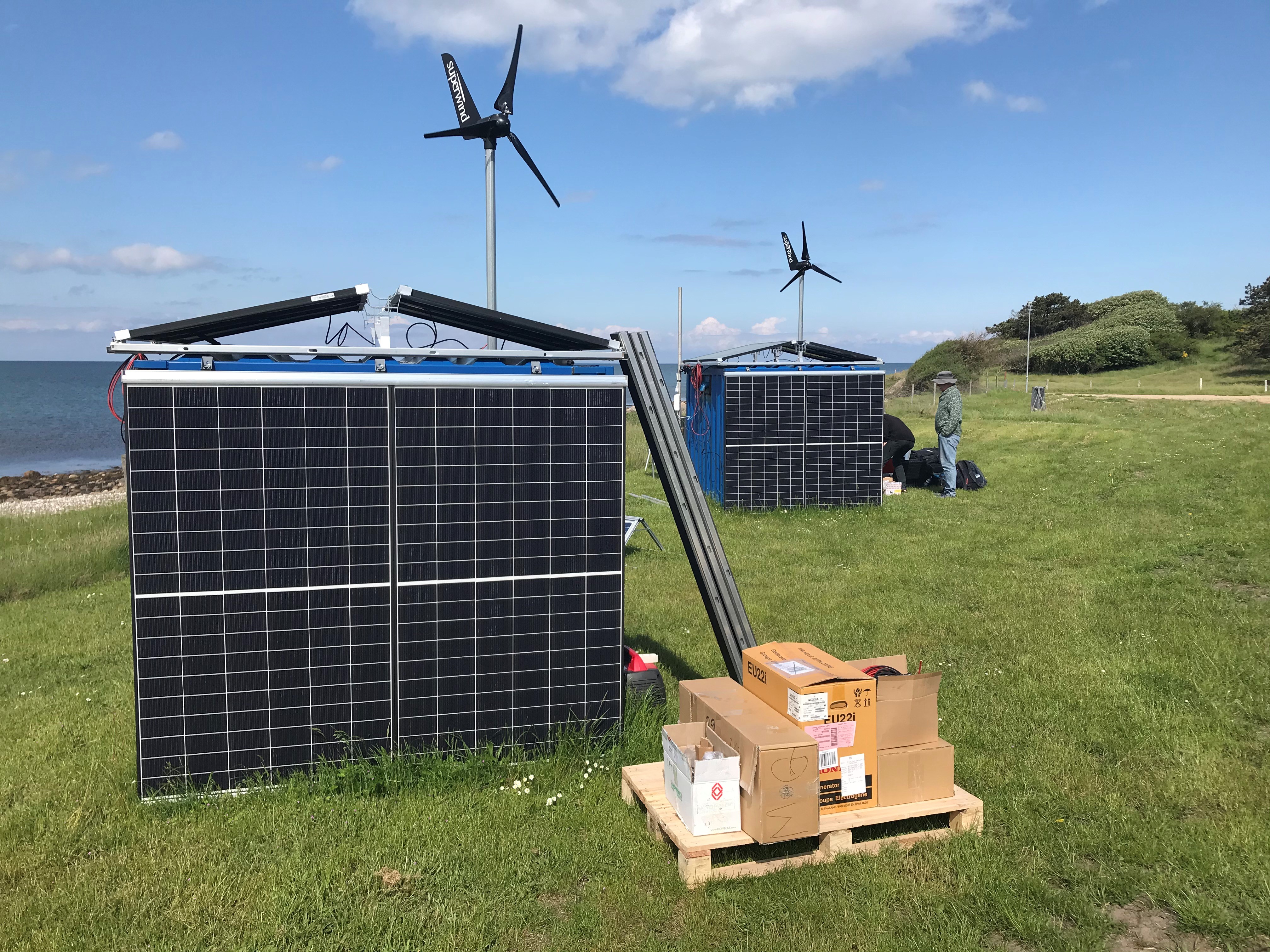Researchers examine Greenland gradients
For the past 25 years, researchers have carried out measurements of the climate and environment in East Greenland. This has resulted in an extremely valuable time series of many different data – primarily on the Zackenberg/Daneborg area and within the framework of the Greenland Ecosystem Monitoring (GEM) program. Presently, researchers at the Arctic Research Centre, Aarhus University, are setting up advanced autonomous measurement stations that expand the data coverage and manage themselves all year round.


A number of measurement stations have just been packed in containers and are currently being shipped to Northeast Greenland.
In early September, the researchers will unpack and set up the measurement stations in different places at Zackenberg, where the sun disappears for approx. three months and where minus 40 degrees frost and howling snowstorms are part of winter.
And it is precisely the sun and wind that will provide power to the measurement stations so that they can collect data on air, ice, soil, rivers and the sea in this inhospitable landscape. It is simply impossible for the researchers to be physically present all year round and the autonomous measurement stations may therefore act as the researchers’ extended arm that can work all year round.
The ambitious project has been named ‘Greenland Gradient’.
Small satellite units
“We will place small measurement stations around the area. They collect data that is transmitted to a “mother station” either wirelessly or via cables. From here, data is transmitted daily by satellite to researchers around the world,” says Professor Søren Rysgaard, who is head of the Arctic Research Centre at Aarhus University and leads the project.
The measurement stations register i.a. temperature, wind, humidity, solar radiation, amounts of greenhouse gases and micro-meteorological conditions. Advanced time-lapse camera systems produce millions of photos throughout the growing season to track the dynamics of plants and insects. In rivers and lakes, measurements will be made of i.a. water flow and in the fjords, the units will track the thickness and movements of sea ice, temperature, salt and current conditions as well as provide data on phytoplankton, crustaceans and fish.
“We have tested all the units in Denmark and are now eager to see whether they can generate enough power and survive the harsh conditions in Northeast Greenland. If it is a success, our aim is to set up similar automated measurement stations from Cape Farewell in South Greenland to the northernmost parts of Greenland, so that we can undertake measurements along and across the climate gradients,” says Professor Torben Røjle Christensen from the Arctic Research Centre and the Department of Bioscience, Aarhus University, who leads the GEM program.
The new data that the automated measurement stations collect will be a valuable supplement to the existing long time series from the GEM program and fulfil the need to gain a better understanding of the spatial variations of the different conditions.
Many challenges
Covid-19 has presented many challenges during the development of the measurement stations. Import of components from all over the world was difficult, workshops and laboratories were closed down and researchers could not meet physically and work together.
"It was a great help that we had an excellent collaboration with the Danish defence. We were allowed to set up test stations at Gibben on Sjællands Odde where we were close to fields, forests and the sea. Researchers from Aarhus University's various locations in Aarhus, Silkeborg, Kalø and Roskilde worked alternately in the “deserted” area and we have thus been able to comply with the various changing isolation rules prevailing since September last year,” says Søren Rysgaard.
‘Greenland Gradient’ is supported by Aage V. Jensen’s Foundation and the project forms the basis of a larger initiative – ‘Greenland Integrated Observing System (GIOS). Here, a wide range of institutions within the Kingdom of Denmark participate to strengthen the collaboration between researchers and institutions that carry out measurements and observations in and around Greenland.
More information:
Søren Rysgaard, Professor and Centre Manager at the Arctic Research Centre, Department of Biology, Aarhus University. Mail: rysgaard@bio.au.dk; phone: +45 2464 3206
Torben Røjle Christensen, Professor at the Arctic Research Centre and Department of Bioscience, Aarhus University. Mail: torben.christensen@bios.au.dk; phone: +45 9350 9049
